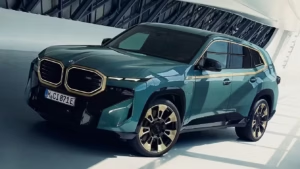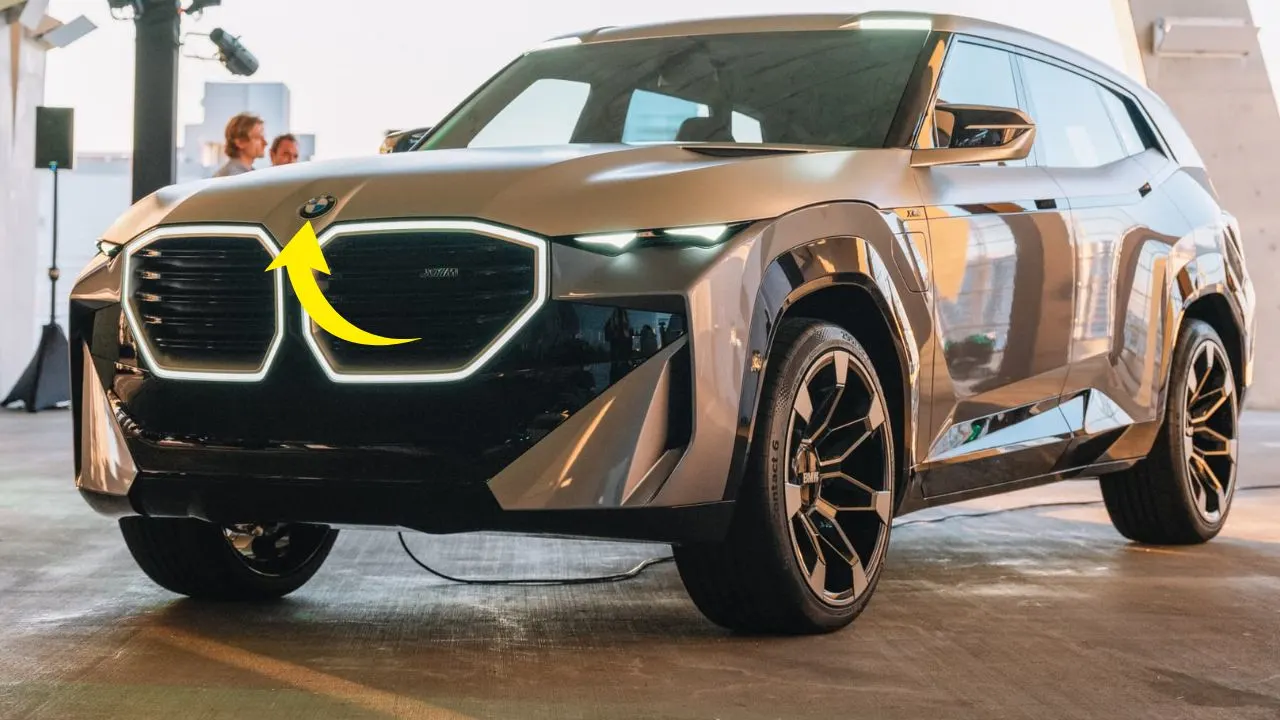G’day, Aussie car enthusiasts! Buckle up for some ripper news: the 2026 BMW XM, the boldest plug-in hybrid (PHEV) SUV from BMW’s M division, is hitting Australian showrooms before year’s end with a massive $34,300 price slash. Previously priced at $344,200, the updated XM Label will now start at $309,900 before on-road costs, making it a more tempting option for those chasing luxury, power, and eco-conscious performance. This article dives into the details of the price cut, what’s new with the 2026 model, why it matters for Aussie buyers, and how it stacks up in the competitive SUV market.
A New Era for the BMW XM
The BMW XM is no ordinary SUV—it’s a statement. Launched as BMW M’s first standalone model since the iconic M1 supercar, the XM combines a monstrous 4.4-litre V8 twin-turbo engine with a high-performance electric motor, delivering a jaw-dropping 550kW of power and 1000Nm of torque. It’s the most powerful production BMW ever built, capable of sprinting from 0–100km/h in just 3.8 seconds while offering up to 30 miles (48km) of electric-only range. This blend of brute force and electrified efficiency makes it a unique contender in the luxury SUV space, rivaling the likes of the Porsche Cayenne Turbo E-Hybrid and Range Rover Sport P550e.

For 2026, BMW Australia has streamlined the XM range, ditching the entry-level ($302,200) and flagship XM Red Label ($349,900) to focus on a single, mid-spec XM Label. Despite the $34,300 price drop, the 2026 model retains all the kit of the current mid-spec version, with some tasty upgrades thrown in for good measure. This move reflects BMW’s strategy to make the XM more accessible while maintaining its premium appeal, especially in a market where electric vehicle (EV) and PHEV sales are surging.
Why the Price Cut?
The $34k price reduction is a bold play by BMW Australia to boost the XM’s appeal in a competitive luxury SUV market. While BMW posted record sales in 2024, outpacing rivals like Mercedes-Benz, Audi, and Lexus with a 160.4% surge in EV sales, the XM itself isn’t a volume seller. Only 144 units were sold in 2024, with just 50 moved by May 2025, compared to the runaway success of models like the i4 Gran Coupe. The price cut aims to shift more units by making the XM a better value proposition against rivals like the Porsche Cayenne (starting at ~$250,000) and the upcoming BYD Fangchengbao Bao 8, a Chinese PHEV SUV with a lower price point.
Australia’s growing appetite for electrified vehicles also plays a role. With Tesla, BYD, and MG leading the EV charge, BMW’s fourth-place ranking in the Aussie EV market shows strong demand for green tech. The XM’s price cut aligns with this trend, offering a high-performance PHEV that balances eco-credentials with M-division grunt. Faster charging capabilities in the 2026 model—though exact specs are yet to be confirmed—further sweeten the deal for buyers seeking convenience and efficiency.
What’s New for 2026?
The 2026 BMW XM Label isn’t just cheaper; it’s better. While it carries over the same 550kW/1000Nm powertrain, it introduces a host of updates to keep it fresh:
-
Interior Upgrades: Three new leather colour options, including a striking Night Blue with Vintage Leather, add a touch of class. The cabin retains its M Merino Leather upholstery and M Multi-function seats, paired with the BMW Curved Display running Operating System 8.5 for seamless control.
-
Wheels and Styling: Buyers can opt for a no-cost upgrade from 22-inch to one of four 23-inch alloy wheel designs, with brake calipers in high-gloss red or black. The Illuminated Kidney Grille, a signature BMW feature, gets illuminated XM badging for extra flair.
-
Tech and Safety: Standard features include Active Blind Spot Detection, Lane Departure Warning, Frontal Collision Warning with City Collision Mitigation, and Parking Assistant Professional. Wireless Apple CarPlay and Android Auto, plus the My BMW App for remote vehicle monitoring, keep you connected.
-
Performance Enhancements: The Adaptive M Suspension Professional, M Sport Differential, and M xDrive all-wheel drive ensure razor-sharp handling, while the PHEV system offers improved charging speed for quicker top-ups at home or public stations.
These updates make the 2026 XM Label a compelling package, blending luxury, tech, and performance in a way that’s quintessentially BMW M.
Why It Matters for Aussies
For Australian buyers, the 2026 BMW XM offers a unique proposition. At $309,900 before on-roads, it’s now priced closer to the base Cayenne while offering superior power and a bold design that stands out in Toorak or Bondi. The PHEV powertrain is a big draw in urban areas like Sydney and Melbourne, where short commutes can be done on electric power, slashing fuel costs and emissions. With up to 48km of electric range, it’s ideal for daily drives, and the combustion engine kicks in for weekend getaways to the Blue Mountains or Great Ocean Road.
The price cut also makes the XM more attainable for high-income earners who want M-division performance without the $350k price tag of the Red Label. Plus, with Australia’s charging infrastructure expanding—many supermarkets, car parks, and workplaces now offer charging stations—the XM’s practicality is on the rise. The BMW Wallbox for home charging and compatibility with public stations make it a versatile choice for city and country alike.
The Competitive Landscape
The XM faces stiff competition in Australia’s luxury SUV market. The Porsche Cayenne Turbo E-Hybrid ($~300,000) offers similar PHEV tech but less power (470kW). The Range Rover Sport P550e ($~280,000) leans more toward luxury than outright performance. Meanwhile, BYD’s Fangchengbao Bao 8, a three-row PHEV SUV, is poised to enter the market at a lower price, targeting buyers after tech-heavy, budget-friendly options. The XM’s advantage lies in its unmatched power, bold styling, and BMW’s premium brand cachet, but its niche appeal limits its mass-market potential.
BMW’s strong 2024 sales, driven by models like the i4, show Aussies are embracing electrified vehicles. The XM’s price cut could attract buyers who might otherwise opt for a fully electric Tesla Model X or a cheaper BYD, but its high price still positions it as a premium choice for those prioritizing performance and prestige.
Challenges and Considerations
Despite its appeal, the XM isn’t perfect. Its polarising design—think massive kidney grille and angular lines—won’t suit everyone’s taste. Sales figures (144 in 2024, 50 by May 2025) suggest it’s a niche player, and the price, even after the cut, remains out of reach for most. Charging infrastructure in rural Australia can be patchy, so buyers in regional areas like Dubbo or Cairns may rely more on the V8 than the electric motor.
There’s also the risk of depreciation. Luxury SUVs, especially PHEVs, can lose value quickly as EV tech evolves. Buyers should weigh this against the XM’s long-term running costs, which are lower than traditional V8 SUVs thanks to its electric range. Consulting a dealer via CarExpert for deals can help mitigate the financial hit.
What’s Next for BMW in Australia?
The XM’s price cut signals BMW’s intent to stay competitive in Australia’s electrified vehicle market. With EV sales up 160.4% in 2024, BMW is banking on models like the XM and X5 xDrive50e (with up to 61km electric range) to capture eco-conscious buyers. Future models, like the next-gen iX SUV, could further bolster BMW’s lineup, but for now, the XM remains the pinnacle of M-division performance.
Aussies keen on the XM can start customising theirs online or visit a BMW Centre for a test drive. With deals available through platforms like CarExpert, now’s the time to score a bargain on this brash, brilliant SUV.
FAQs
1. How much is the 2026 BMW XM in Australia?
The 2026 BMW XM Label is priced at $309,900 before on-road costs, a $34,300 reduction from its previous $344,200 price.
2. What’s new in the 2026 BMW XM?
It features three new leather colours (e.g., Night Blue with Vintage Leather), optional 23-inch alloy wheels, faster charging, and the same 550kW/1000Nm powertrain. Standard tech includes the BMW Curved Display and advanced safety systems.
3. Why did BMW cut the price of the XM?
The $34k cut aims to boost sales in a competitive market and make the XM more appealing against rivals like the Porsche Cayenne and Range Rover Sport, while capitalising on Australia’s growing PHEV demand.
4. Can I charge the XM at home?
Yes, the XM supports home charging via a BMW Wallbox or standard power socket, plus public charging stations. Its improved charging speed enhances convenience for Aussie buyers.
Looking Forward
The 2026 BMW XM is a beast of an SUV, blending electrified efficiency with M-division muscle at a newly affordable $309,900. With a $34k price cut, updated styling, and cutting-edge tech, it’s a compelling choice for Aussies after a luxury PHEV that stands out. While its bold design and niche appeal may not suit everyone, the XM’s power, versatility, and eco-credentials make it a standout in a crowded market. Whether you’re cruising Sydney’s streets or tackling the Outback, the XM delivers a driving experience that’s as brash as it is brilliant. Head to CarExpert or your local BMW dealer to snag a deal and experience this game-changer for yourself.

